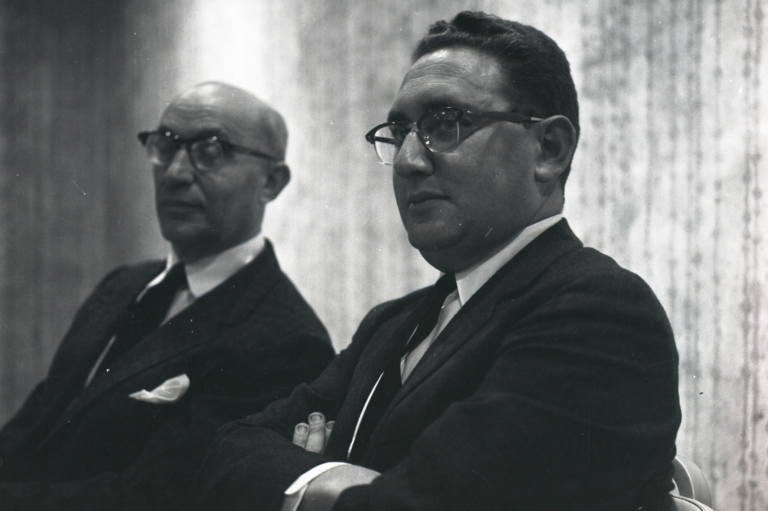February 23, 2000
Volume 2/ Number 4
Dear Friend and Colleague:
Statistics issued by the US Census Bureau months ago were recently resurrected by the US Department of Commerce to suggest that America is becoming overpopulated.
Steven W. Mosher
President
Commerce Spin Aids Domestic Family Planning Proposal
POPULATION RESEARCH INSTITUTE — The timing was most curious. Immediately after Clinton announced in his weekly radio address on 8 January 2000 his proposal to increase domestic family planning spending by $35 million to provide “a full range of reproductive health supplies” for the “urban poor,” the US Commerce Department raised the specter of overpopulation in America (see: PRI’s Weekly Briefing, “Population Control Comes Home in Clinton’s Budget,” 9 February 2000).
America’s population was set to double to 571 million by 2100, the Commerce Department’s press release claimed (US Department of Commerce, “Census Bureau Projects Doubling of Nation’s Population by 2100,” press release, 13 January 2000).
Newspapers across the country ran headlines warning of this new population explosion, pointing out (as Commerce had reported) that most of the population increase would result from new immigrants and their offspring. “America is getting bigger fast, almost entirely because of immigrations,” claimed a typical account (“US population expected to hit 571 million by 2100,” The Washington Times, 13 January 2000).
The firestorm was swept along by the chairman of a key House subcommittee on immigration, who warned that the growth would lead to “suburban sprawl, transportation gridlock and urban crowding” (“Debates over urban sprawl…” letter from Lamar Smith (R-TX), Chairman of House subcommittee on Immigration and Claims, 10 February 2000).
How realistic is this projection?
Any population projection that looks more than a few years out is questionable. Estimating what the population of the US will be a hundred years from now is a particularly risky business. How can one predict the fertility behavior of people who haven’t even been born yet? Who knows what the birth rate will be in 2060, or how many immigrants will arrive in the US in 2080?
It is precisely because future population growth (or decline) is so difficult to predict that the US Census Bureau (USCB) routinely publishes three estimates-a high variant, a middle variant, and a low variant. Commerce’s warning of population doubling was premised on the “middle variant” of USCB’s projections. The problem is that, because of the rapid fall in fertility rates during recent decades, the “middle variant’ is historically less accurate than the “low variant” prediction.
A look at the “low variant” reveals a much different demographic picture. In this forecast, US population will peak at a mere 314 million in 2050, then begin a gradual slide to 283 million by 2100. The UN Population Division’s (UNPD) low variant prediction projects that the US population will peak earlier and lower (in 2030 at 305 million), and then drop to 293 million by 2050. This is to say, America’s long-term problem is not too many people, but too few people.
Family planning promoters have always played fast and loose with the numbers. In 1974 they projected that the world would have a population of 6.5 billion by this year, a round 500 million too high. They projected that the world’s population would reach 12 billion by 2075, almost 5 billion higher than what the UNPD now expects (“The Kissinger Report,” National Security Study Memorandum 200, 10 December 1994).
The United Nations Population Fund’s (UNFPA) population report of 12 October 1999 over-stated the world’s future population growth by about 2 billion, and under-stated the number of nations currently at or below replacement level fertility (see: “UNFPA Mis-states World Population, PRI Prepares to Celebrate the Birth of the World’s Six Billionth Person!” PRI Press Release, 23 September 1999; https://www.pop.org/nr092399.htm).
These same scare tactics have also been used closer to home. In their book, Too Many Americans, Lincoln and Alice Day predicted that the US population would grow to one billion people by 2060. Arguing from these inflated numbers, they proposed that the poor should be showered with free contraceptives (Lincoln and Alice Day, “Too Many Americans: Tomorrow’s Issue,” Boston: Houghton Mifflin, 1964).
Did the Commerce Department attempt to use the specter of overpopulation in the same way, namely, to frighten Americans into supporting the President’s proposed increase in domestic family planning spending?










